Endometrial regenerative cells as a novel cell therapy attenuate experimental colitis in mice
- PMID: 25475342
- PMCID: PMC4269937
- DOI: 10.1186/s12967-014-0344-5
Endometrial regenerative cells as a novel cell therapy attenuate experimental colitis in mice
Abstract
Background: Endometrial regenerative cells (ERCs) are mesenchymal-like stem cells that can be non-invasively obtained from menstrual blood and are easily grown /generated at a large scale without tumorigenesis. We previously reported that ERCs exhibit unique immunoregulatory properties in vitro, however their immunosuppressive potential in protecting the colon from colitis has not been investigated. The present study was undertaken to determine the efficacy of ERCs in mediating immunomodulatory functions against colitis.
Methods: Colitis was induced by 4% dextran-sulfate-sodium (DSS, in drinking water) in BALB/c mice for 7 days. ERCs were cultured from healthy female menstrual blood, and injected (1 million/mouse/day, i.v.) into mice on days 2, 5, and 8 following colitis induction. Colonic and splenic tissues were collected on day 14 post-DSS-induction. Clinical signs, disease activity index (DAI), pathological and immunohistological changes, cytokine profiles and cell populations were evaluated.
Results: DSS-induced mice in untreated group developed severe colitis, characterized by body-weight loss, bloody stool, diarrhea, mucosal ulceration and colon shortening, as well as pathological changes of intra-colon cell infiltrations of neutrophils and Mac-1 positive cells. Notably, ERCs attenuated colitis with significantly reduced DAI, decreased levels of intra-colon IL-2 and TNF-α, but increased expressions of IL-4 and IL-10. Compared with those of untreated colitis mice, splenic dendritic cells isolated from ERC-treated mice exhibited significantly decreased MHC-II expression. ERC-treated mice also demonstrated much less CD3(+)CD25(+) active T cell and CD3(+)CD8(+) T cell population and significantly higher level of CD4(+)CD25(+)Foxp3(+) Treg cells.
Conclusions: This study demonstrated novel anti-inflammatory and immunosuppressive effects of ERCs in attenuating colitis in mice, and suggested that the unique features of ERCs make them a promising therapeutic tool for the treatment of ulcerative colitis.
Figures
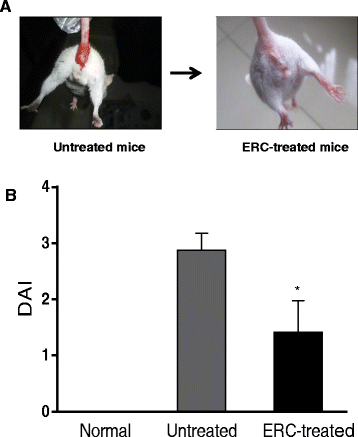
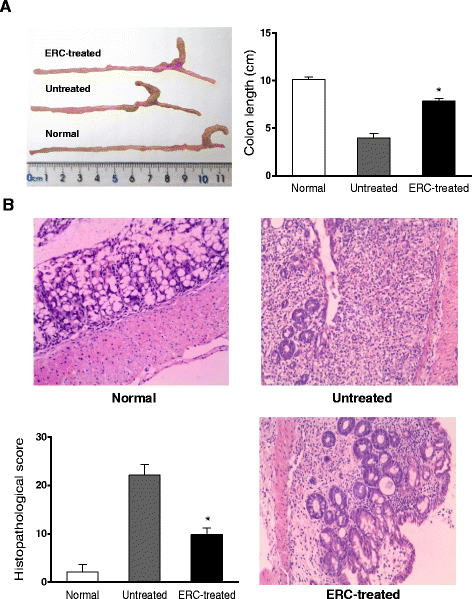
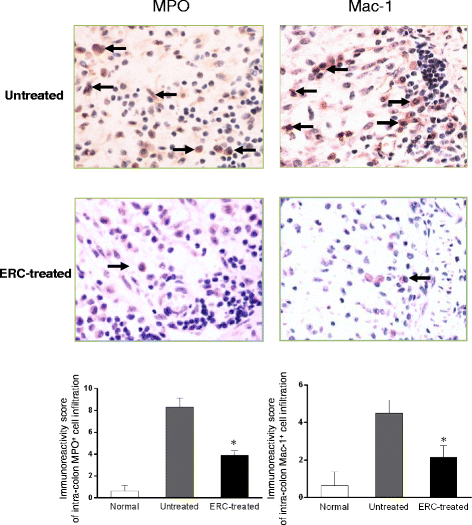
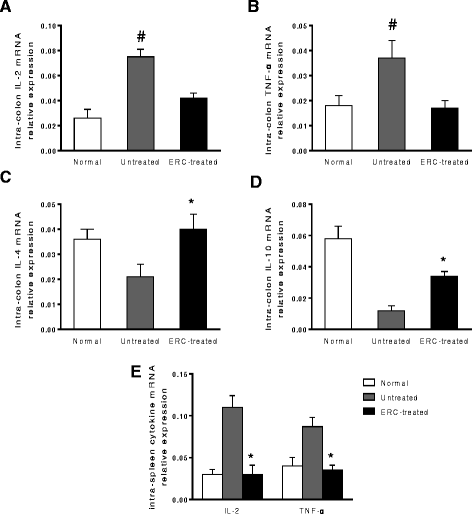
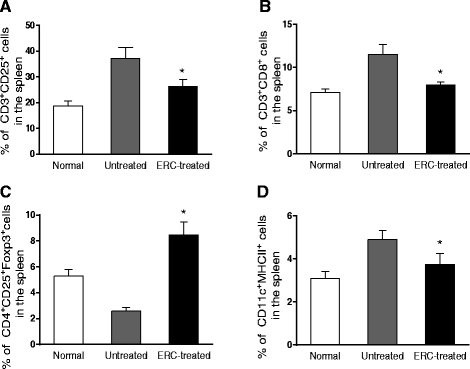
References
Publication types
MeSH terms
Substances
LinkOut - more resources
Full Text Sources
Other Literature Sources
Research Materials

